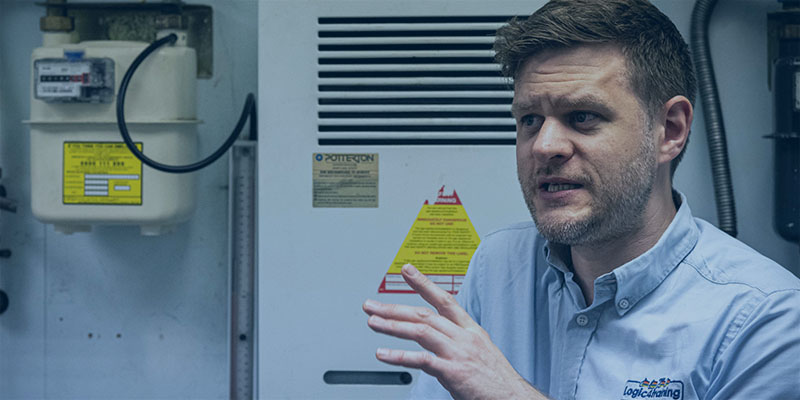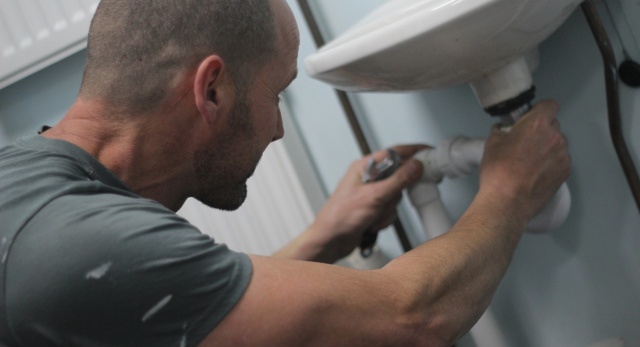Welcome to the fourth article in this series on boiler efficiency and heating design.
In the last article, amongst other things, we looked at how lowering flow temperatures can influence radiator heat outputs, and how that could affect the warmth of a property. In this blog we are going into more detail about why that happens.
In this blog we are going into more detail about why that happens, and to do that we need to understand the relationship between radiator mean water temperature (MWT), and room air temperature (AT).
We will then look at how they directly affect radiator manufacturers stated heat outputs.
So, let’s get to it.
Understanding Boiler Efficiency
The MWT is the average of a radiators flow and return temperatures.
An example would be 55°C flow, 35°C return = 45°C MWT ((55 + 35) / 2).
Please note that this is not a Delta T, but an average.
AT is the room design temperature, this would generally be between 18 and 22°C depending on requirements, but for this blog we will use 20°C.
In a system with a MWT of 45°C and an AT of 20°C we have a temperature differential (Delta T) of 25°C.
On the other hand, in a system with a MWT of 70°C (75 flow and 65°C return) and an AT of 20°C, we have a Delta T of 50°C.
This MWT to AT Delta T determines how much heat a radiator can emit.
Which MWT to AT Delta T do you think will cause a radiator to emit more heat, 50°C or 25°C?
If you answered 50°C, then you are correct.
The greater the temperature difference, the higher the heat transfer.
The reason this matters, is that the heat output of every radiator, in fact any type of emitter, varies based on the MWT to AT Delta T…….. interesting!!!!
Optimizing Heating Systems for Efficiency
When radiator manufacturers stipulate heat outputs of their radiators, they do it following a fixed set of parameters based on the industry standard that covers technical specs and requirements for radiators. This standard is BS EN 442-1, and the radiators you buy will have stated heat outputs based on the parameters set out in this standard.
The problem this poses to the heating engineer is that most heat outputs we see in radiator catalogues are based on a 75 flow, 65 return and 20°C room temperature.
This works out to be a MWT to AT Delta T of 50°C.
It’s possible that you’ve seen this before without realising it.
Ever noticed a Delta T symbol (Δt) on the top left or top right of a page when looking through a radiator catalogue? If you have, then the likelihood is it would have been 50Δt.
This means that all the radiator heat outputs (Watts and Btu) you are looking at on that page are based on a temperature difference between the surface of the radiator (MWT) and room temperature (AT) of 50°C.
There would be no issue if our systems were running at 75°C flow with 65°C return, but we are now meant to be designing, installing and commissioning to 55°C flow as a maximum. This means that we cannot use the heat outputs stated in radiator catalogues when 50Δt is used.
Energy-Saving Techniques for Heating Systems
Some radiator manufacturers do provide heat outputs relating to Dt 40 and 30 in their catalogues or tech specs, but unfortunately not all of them. Even if they do, you might still have inaccurate information if you have something like an MWT to AT Delta T of 35°C.So, instead we need to apply an oversize correction factor.
The correction factors, and how we find them, are looked at in greater detail in our Low temperature heating design course.
Here is an example of how we can use a radiator oversizing correction factor to improve boiler efficiency.
If we have a heating system designed to a flow of 55, return of 35 and room temperature of 20°C, then our MWT to AT Delta T is 35°C.
So, whatever the heat requirement is for a room, we must deliver it at an MWT to AT DT of 35.
In this case we can’t use the heat outputs stated in radiator catalogues as they will be based on a MWT to AT DT of 50°C (unless otherwise stated)
Using the low temperature heating design course training manual we find that the oversizing correction factor for the above scenario would be 2.5.
This means that you need to buy a radiator that has a stated heat output 2.5 times that of the heat requirement you have calculated.
For example, if our heat requirement is 1,000 Watts, and our correction factor is 2.5, then the sum would be:
1,000 x 2.5 = 2,500 Watts (2.5 kW).
We would need to buy a 2,500 Watts radiator (DT 50) to be able to provide 1000 Watts of heat at a MWT to AT DT of 35°C.
Something to consider!!!
Final thoughts on the importance of boiler efficiency
Okay, lots of information there, but it will hopefully get you thinking that whenever you are installing a radiator on any system with a flow temperature less than 75°C, then it is very likely you cannot rely on the heat output stated in the radiator catalogue.
So, until next time; happy learning…..
Ready to book your energy efficiency course?
Find out more about our energy efficiency course.
Give us a call on 020 8845 7222 or request a call-back.









